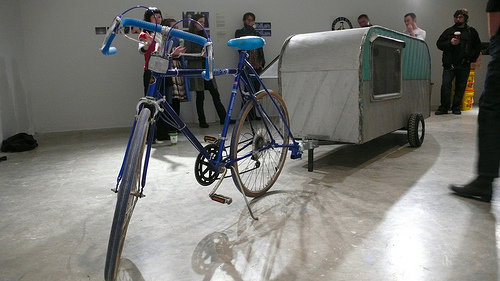Interview with Michael Collins
Yun: From your old projects, even though some of them were object-based works, I thought you were talking about the structure of society. Once you focused on your own journey and personal memory, that goal seems to be more successfully appearing in your work as a main point of discussion. Michael: I was focusing on the structure of society, and how we are tied to our location by permanent dwellings, and some of the consequences of living in a site-built home. I wanted to contrast that with the potential reality of permanent mobility, the idea that I could get back to a sort of utopia by living out of my little trailer. My work was a result of my research into the history of the travel trailer and its transition from a temporary camping unit to what is now referred to as manufactured housing. I wanted to challenge the trajectory of the industry, by turning a mobile home back into a travel trailer. This expressed my longing for a mobile existence, at least the dream of being mobile. 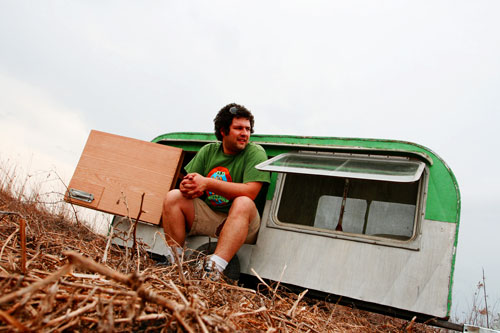 Kozy, 2009. Sitting inside the doorway of my trailer. | 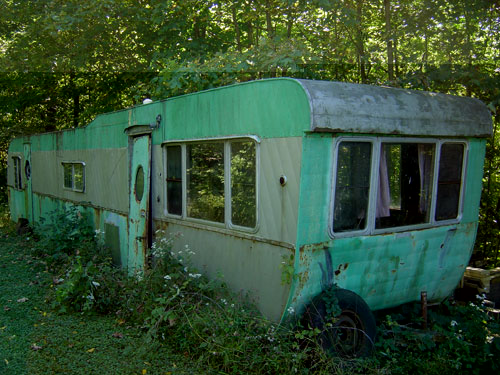 1953 Kozy Coach Mobile home, photo taken in 2009. Shortly after the photo was taken, it was dismantled, and some of the materials were used to build a small travel trailer that would be pulled behind my bicycle.
Yun: According to your explanation, you want to re-define the meaning of dwelling by questioning traditional lifestyles. What could possibly happen if we remove the local permanence from life? Somehow we are part of our location in terms of culture and nature. If you remove the function of the permanent stability of living, it seems that your experiences based on time can lose the unity of memory. Michael: I think that we are tied to our homes
by culture, and the security we feel from the familiarity, the routine that
becomes established from living in a permanent dwelling. I think as we peel away our obligations that
we have in our established lifestyle, we can become more flexible, not only
culturally, but especially with time. I
think everyone aspires in some way to have control over their time, but they
also fear it ever becoming unreliable, in the same way they fear not having a
permanent home. Freedom can make people
feel vulnerable, but that same vulnerability can be empowering.
|
Yun: The time and space relationship is very interesting. It sounds like you are saying that our sense of time could be changed by the flexibility of location. If we don’t have a closed space, such as a place to go back to or a place that we are supposed to go back to after finishing a day, the structure of life would have a different shape—a shape like an opened space and it seems like a reset button for your everyday life, to refresh your memory and body since your structure of time doesn't have that circulatory nature of going from home to office and back home again, etc. Michael: I think people need to be refreshed in that way, at least to have the perception that they are in control of their time, and when they don’t they experience dissatisfaction. I think that when people experience nature in a way that’s removed from technology, they are able to achieve that timelessness because of the different schedules of time that are happening simultaneously, from the slow schedule of a tree, the speed of a river, or the flight of a bird, these different sequences help us to be temporarily distracted from our usual experience of time by changing our perspective.Yun: Your potential journey resembles the sentimental archetype of a man who is living alone in nature. Even though you are showing an object, it is capturing a moment of existence which is nostalgic and suspended in time, without a past or future. | 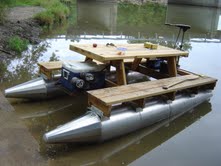 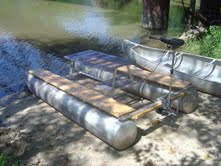
|
"In the context of the trailer, which resembles a travel trailer of the past, it is a bit nostalgic, but I think it’s also futuristic in a sort of Mad Max apocalyptical kind of way, like if everything were destroyed, we’d be forced to make homemade trailers out of scrap materials and roam about searching for food and companionship, I guess that’s the darker side of the potential journey, it could be endlessly longing."
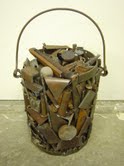 Scrap Bucket, 2009, steel. Scrap from the studio welded into the shape of a bucket. | Michael: I think that to a certain extent there is a societal expectation for a man to go out (into the wild), explore, and conquer (nature), and something about that transformative journey builds our character, it helps us achieve independence. It’s sounds a bit cliché’, but I think it’s universal in most cultures, the idea that a solemn journey, one that is both physically and mentally challenging, can be transformative. In the context of the trailer, which resembles a travel trailer of the past, it is a bit nostalgic, but I think it’s also futuristic in a sort of Mad Max apocalyptical kind of way, like if everything were destroyed, we’d be forced to make homemade trailers out of scrap materials and roam about searching for food and companionship, I guess that’s the darker side of the potential journey, it could be endlessly longing. Yun: Could you explain about some of the differences between your previous works and the trailer work? |
Michael: Prior to my current work, I had political work, works about the environment, work about materiality and my role as a consumer, etc. I think my current work is a lot more focused. There is a lot of context for what I’m doing now, the history of transportation, housing, and leisure. It’s not that my previous work lacked context, but I feel like my current work is more resolved, and not so random. I think in the past I was working more like a comedian writing jokes, and all I cared about was the punch-line. I think I was obsessed with the viewer receiving an instant metaphor, and I got a sort of rush from the challenge of trying to put 100% of the information on the surface. I’m more comfortable now with letting the work take it’s time to tell the story.
Yun: Thank you. 09/12/2011
|
ARtist statement
The modern RV is a hybrid of an automobile and a house. I’m creating new hybrids which revisit the utopic vision of the founders of the portable dwelling, exploring how we benefit as a society from the ability to change our location, yet maintain a certain level of stability. I’m creating experimental modes of transportation which seek to explore the potential for new experiences, and the establishment of a set of leisure practices. At many moments in our history people have sought to enhance their experience of leisure by combining activities and creating their own realities, oftentimes a mode of transportation was employed, and the experience of movement through space became the goal. Something as common as listening to music in an automobile at one time had to be revolutionary, pioneering the way towards a shared experience that would relate to our cultural identity.
There is a conflict between the conventional lifestyle of permanence and stability, and the longing to achieve a sense of freedom through movement. What is the role of the individual in relation to the institution, and how do we navigate our way through the system? Are we limited by the structure of the institution to a point of being controlled, or does the institution benefit us with providing the structure to allow us to achieve our goals? The unconventional journey is a shared cultural pursuit, a vision quest, from conquering a mountain, to traveling to the moon, each person creates their own reality. Through my pursuit of a set of critical leisure practices I’m seeking to improve the lives of others and myself, while providing a framework to contemplate philosophical and ethical concerns related to my existence.
